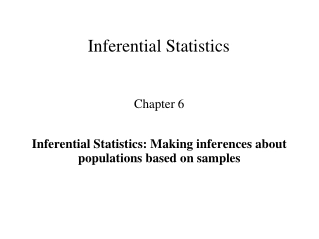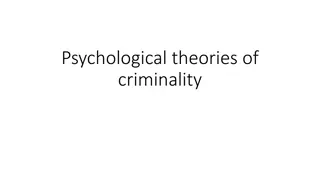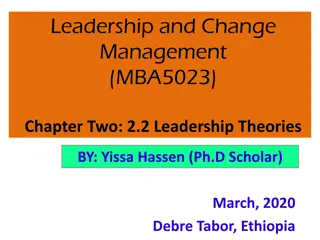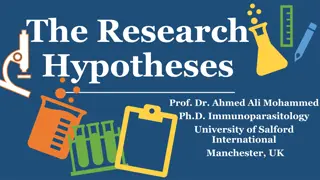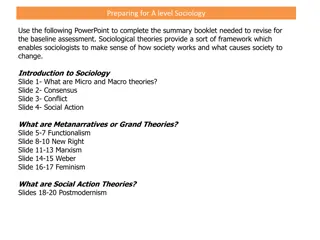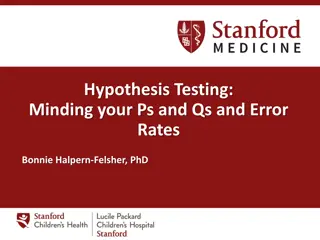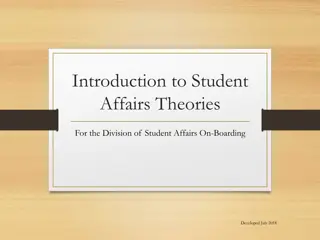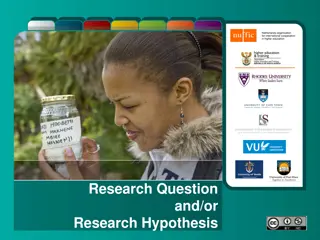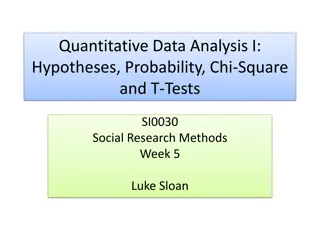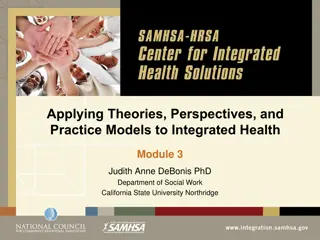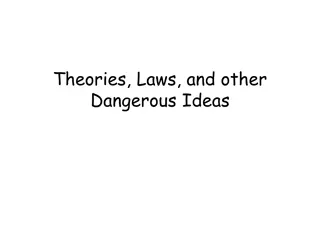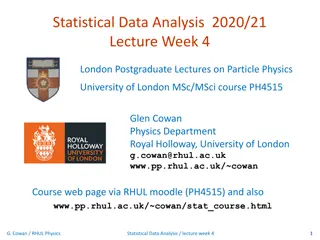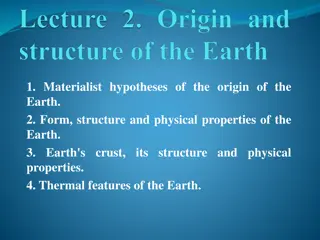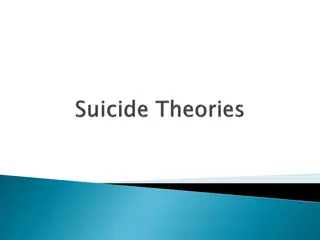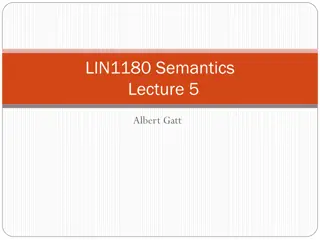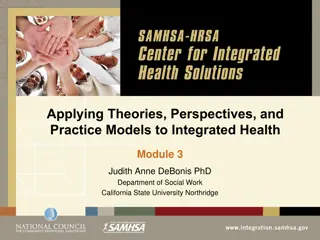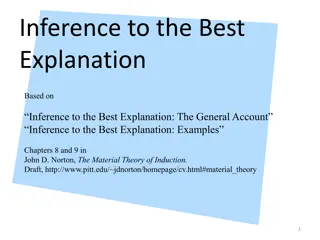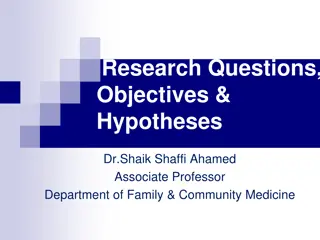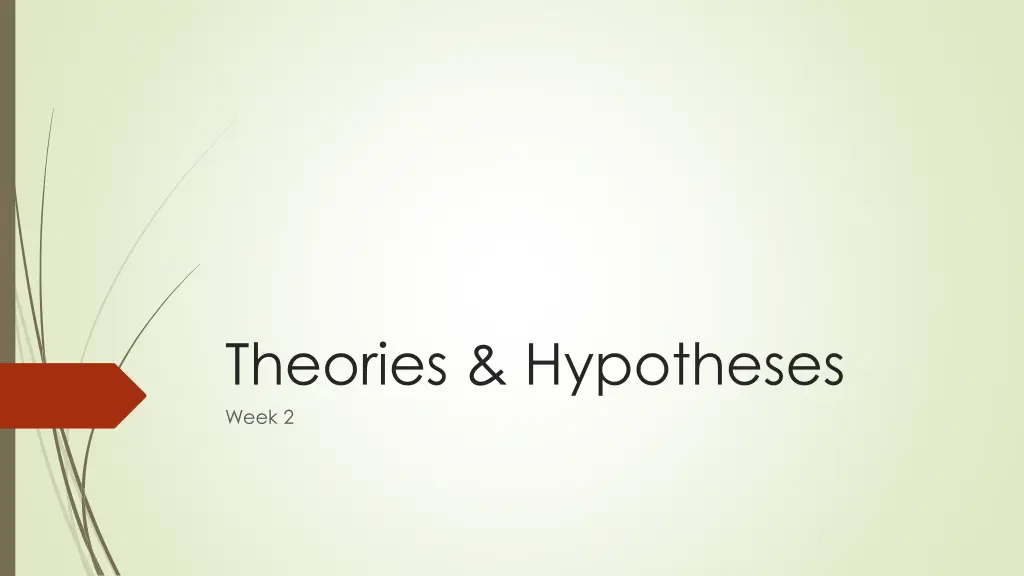
Understanding Theories and Hypotheses in Social Science
Delve into the world of social science theories and hypotheses, exploring how theories provide a foundation for understanding social phenomena while hypotheses allow for empirical testing. Learn about the process of operationalization and the importance of testing hypotheses in the scientific method.
Download Presentation

Please find below an Image/Link to download the presentation.
The content on the website is provided AS IS for your information and personal use only. It may not be sold, licensed, or shared on other websites without obtaining consent from the author. If you encounter any issues during the download, it is possible that the publisher has removed the file from their server.
You are allowed to download the files provided on this website for personal or commercial use, subject to the condition that they are used lawfully. All files are the property of their respective owners.
The content on the website is provided AS IS for your information and personal use only. It may not be sold, licensed, or shared on other websites without obtaining consent from the author.
E N D
Presentation Transcript
Theories & Hypotheses Week 2
The wheel of science model Deductive Science begins with theory, statements that explain the patterns we observe Inductive science to begin with our observation to conclude what those observations mean for the whole
What are theories? Theory is the basic building block of social science, helping to structure the ways in which we view how and why things work together Its task is to link concepts (education, healthcare, religion, state, etc.) Theory asks the Why? question Theorymakes assumptions about human nature and then offers us general explanations of a variety of social behaviors given certain social conditions Thus, theories explains and predicts (ex. Speed limit > road mortality) Theories should be parsimonious: explaining the most phenomena with the least amount of theoretical assumptions Theories must be tested empirically to remain useful: If something cannot be observed using the five senses, then it is not within the purview of social science but perhaps of philosophy or religion
What are hypotheses? Hypotheses are the second step of wheel of science model Hypothesesfollow from theories, stating relationships between two or more concepts in such a way that they can be empirically tested Theory states: Social class affects voting behavior. Hypotheses state how above concepts work together: Those with higher social class will be more likely to participate in politics. Relationships work in positive and negative direction Relationships between concepts must be measurable and posses directionality (positive or negative impact) Social class > subjective class identification from 2010 General Social Survey (GSS) Participation in politics > asking respondents whether they voted in presidential/parliamentary elections
Religious participation attitude to abortion Hypothesis: As religious participation increases, support for abortion decreases. Hypothesis: As religious participation decreases, support for abortion increases.
Operationalization Transforming variables into something measureable Concept > variable > indicators Variables must be exhaustive and mutually exclusive Exhaustive: have answer categories that allow accounting for every person Mutually exclusive: no one person can fit into more than one category Example: What is your religious preference? 1. Protestant 2. Catholic 3. Jewish 4. Muslim 5. None 6. Other____________
Survey data National Kazakhstan Youth Survey (2016): http://projects.ff.uni-mb.si/cepss/index.php/youth- studies/ Central Asia Barometer: http://www.centralasiabarometer.org/ Eurasia Barometer: http://office.eurasiabarometer.org/ General Social Survey of the Russian Federation and Central Asia (1992): https://www.icpsr.umich.edu/icpsrweb/ICPSR/studies/6499 International World Values Survey: http://www.worldvaluessurvey.org/wvs.jsp Varieties of Democracy (V-Dem): https://www.v-dem.net/en/data/data-version-8/ Eurobarometer: https://www.gesis.org/eurobarometer-data-service/search-data- access/data-access/ UK General Household Survey: https://data.gov.uk/dataset/138ca035-a90c-4e37-80f5- 4c73eeb6ae04/general-household-survey
Single or Multiple Indicators Some variables are straightforward (single) Eg. Sex, family size Others are not (multiple) Eg. Religiosity, academic performance, corruption Social scientists make several observation of same variables, combine them and create a composite measurement of variable > index Eg. 0-10 Democracy Index (https://infographics.economist.com/2018/DemocracyIndex/)
Criteria of Measurement Quality Precision and Accuracy Eg. 1. A woman is 43 yrs old vs. A woman in her fourties Eg. 2. A person was born in Ushtobe, Almaty district vs. born in Almaty district Reliability: quality of measurement method that suggests that the same data would have been collected each time in repeated observation of the same phenomenon Validity: a measure which accurately reflects the concept it is intended to measure Face validity Criterion-related validity
Ethics of measurement Operationalizing concepts should be meet ethical standards Eg. pro-abortion or pro-choice Eg. 2. US invasion of Iraq in 2003 framed as: unprovoked invasion of sovereign nation retaliation for the September 11, 2001 defensive act against perceived threat war on terror
Written assignment Following are two options for assignment to be submitted next class. 1) Define and operationalize your concepts from the last written assignment. If you have not done it, then pick a social science concept such as liberalism or alienation and operationalize it. 2) How does the General Social Survey (GSS) operationalize one of the following terms (choose one): a) social trust b) prejudice c) altruism

